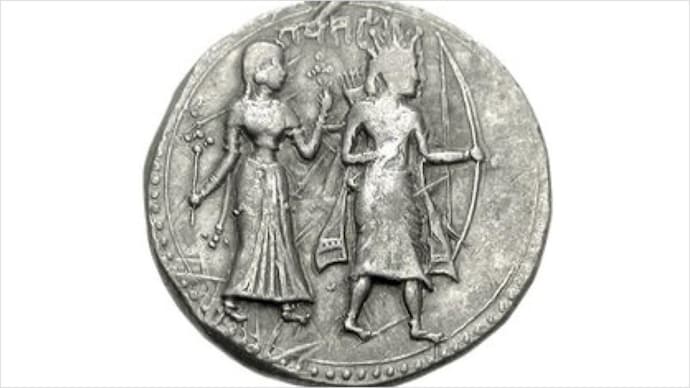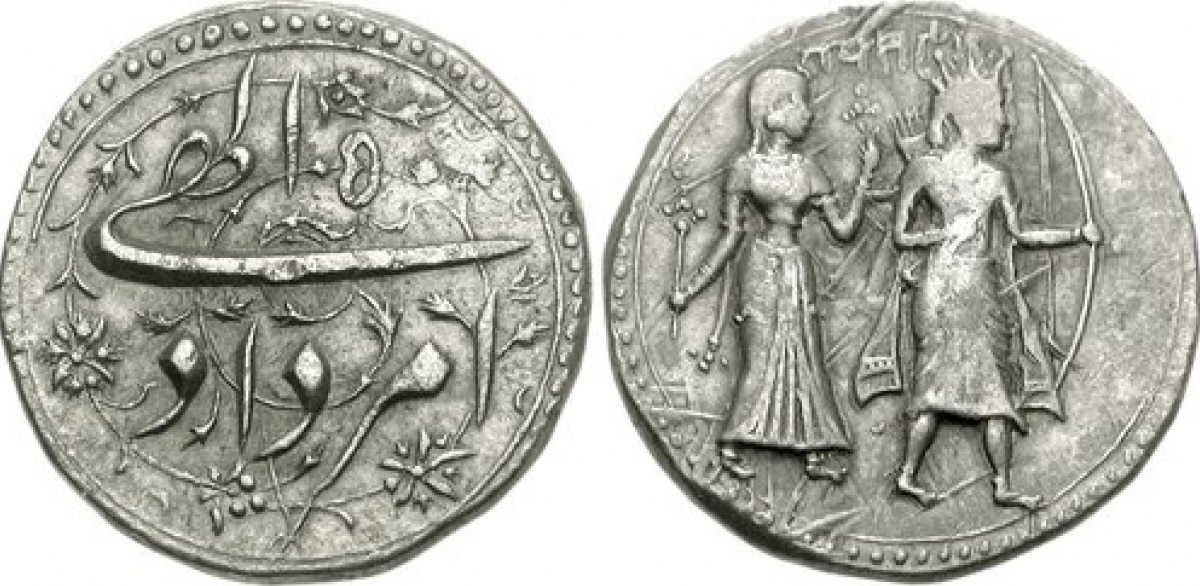Akbar's Ram bhakti on display in beautiful 17th century coins
The great Mughal ruler issued coins honouring the Hindu deities Ram and Sita as part of his new religious thought, in which he formed an amalgam of all religions.

In Short
- Ram Siya coins issued by Akbar in 1604-1605
- Minting of coins probably influenced by presence of Raja Todarmal
- Only 3 such coins -- 1 gold and 2 silver -- remain.
A beautiful silver coin more than four centuries old is engraved with the forms of Lord Ram, carrying his bow and arrows, and Sita; it reads: "Ram Siya."
The inscription on the other side is a clue about its history: "Amardad Ilahi 50", meaning the 50th year of the reign of Akbar.
The great Mughal ruler issued coins honouring the Hindu deities in 1604-1605, even though idolatry is prohibited in Islam. He did so as part of his new religious thought, in which he formed an amalgam of all religions.
The name "Ilahabad" -- later spelled Allahabad by the British -- also came from this school of thought, where "Ilahi" or "God" was one and the same no matter in what form He was worshipped.
The coins depicting Ram and Sita were issued in both silver and gold; minting ended right after Akbar's death in 1605.
Sources in the Archaeological Survey of India say such coins weren't issued in large numbers, and the minting of these coins was probably influenced by the presence of Raja Todarmal as the Royal Treasurer.
Only three such coins -- one gold and two silver -- remain.

'SYMBOLS OF AN INCLUSIVE EMPIRE'
Hindustani Birdari Vice-Chairman Vishal Sharma told India Today that no matter how he may have ruled in his early years, the Ram Siya coins are the symbols of an inclusive empire that Akbar envisioned during his final years, where Hindus and Muslims could live together in peace and harmony.
The coins tell the story of an empire that stretched for a duration of fifty years and saw the birth of a new religion.
It was during Akbar’s reign that the theory of Sulh-e-Kul (universal peace) was postulated. Today, besides being known for the Taj Mahal, Agra is also known as the city of Sulh-e-Kul.
